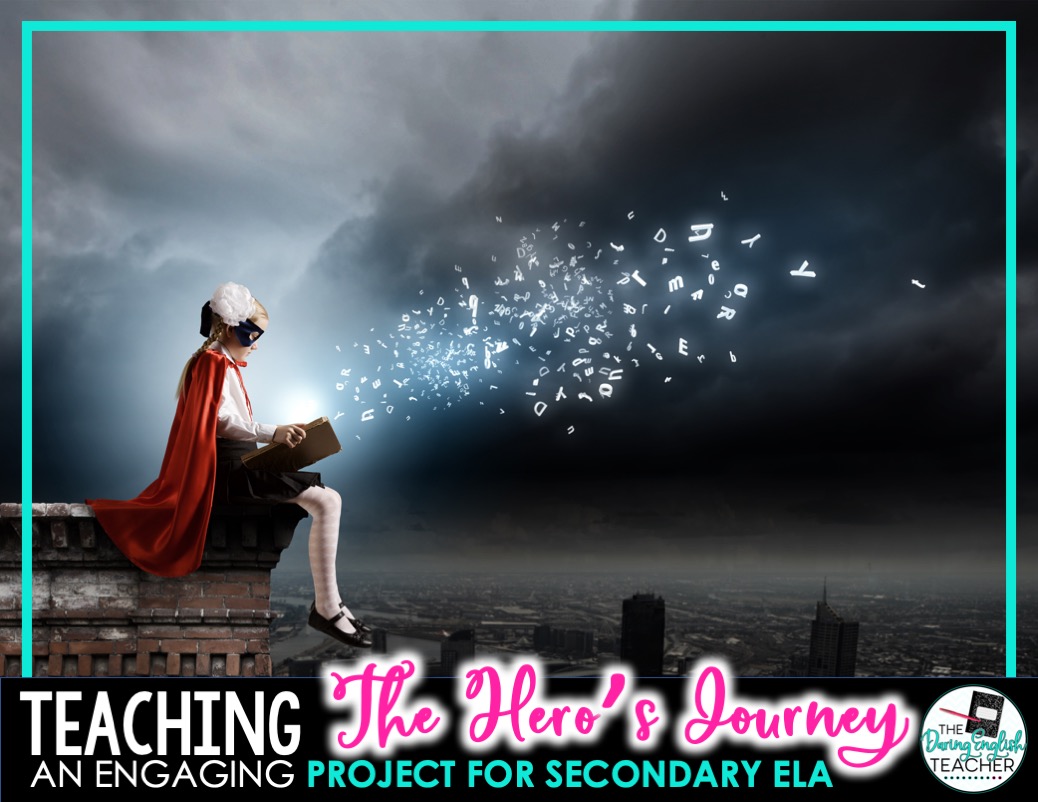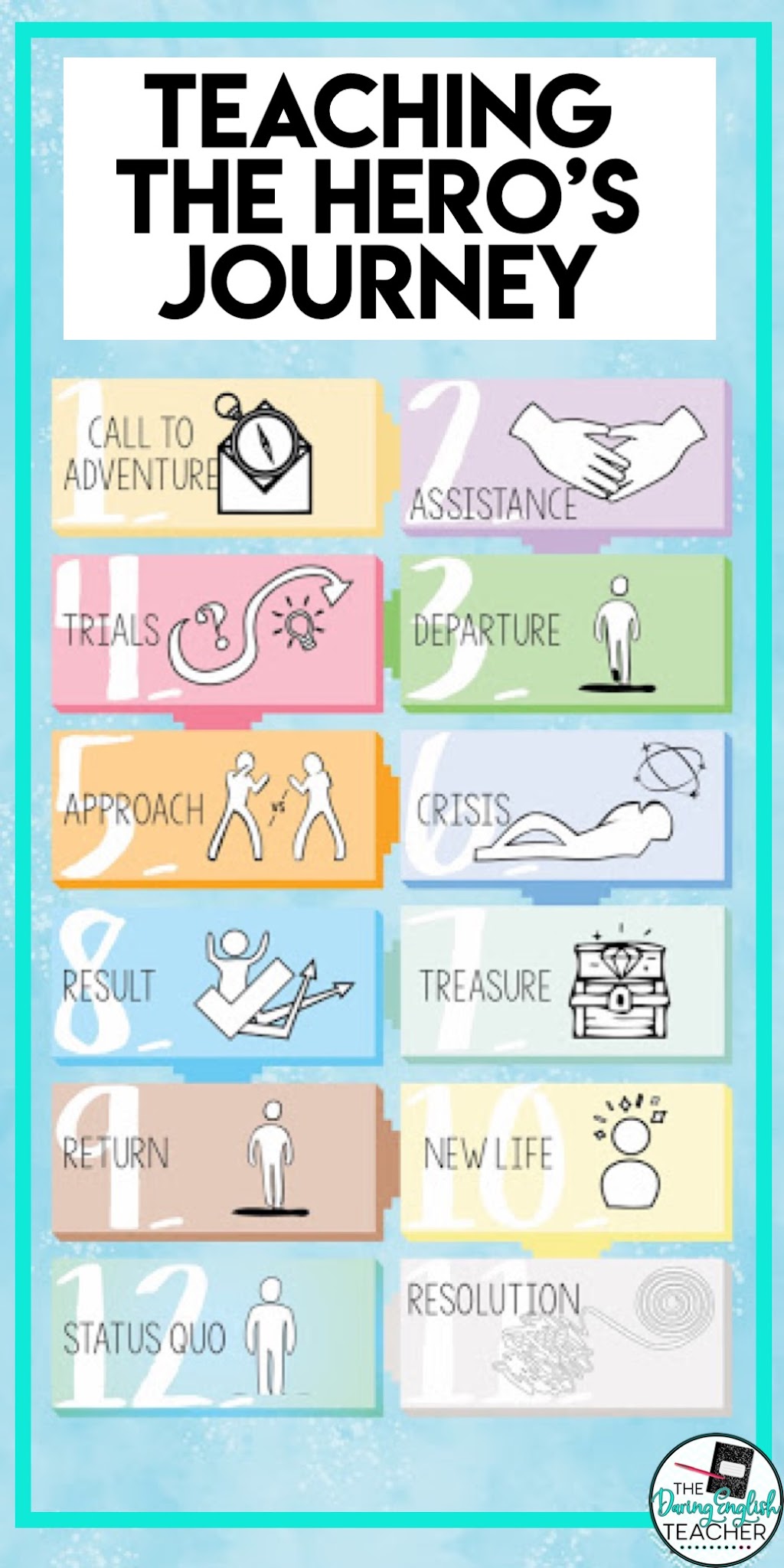


One of my favorite lessons to teach in my short story unit is the Hero’s Journey. I enjoy teaching the hero’s journey because I love seeing my students’ aha! moments – the moment when they get it, and they start making the connections between the content I am teaching and their favorite books and movies. Their faces light up, and faint chatter about Harry Potter, various Disney movies, and other stories slowly fills the room.
To introduce the Hero’s Journey, I first teach my students about the Hero’s Journey. Then, I show the Ted Ed video “What Makes a Hero?” by Matthew Winkler. This video is spectacular for a couple reasons. First, I love how it presents the Hero’s Journey in relation to a clock and a cycle. This visual sticks with the students. I also like how this video relates to the notion of the Hero’s Journey to students in their everyday lives.
Once we go over the video, we then read a short story and track the protagonist’s journey as a hero. Together, we identify each element of the Hero’s Journey cycle as outlined in the video and then discuss the qualities that make the character a hero. This helps me gauge whether or not my students are ready for the Hero’s Journey project. I have a graphic organizer in my Sticky Note Literary Analysis Unit.
The Hero’s Journey poster project is one of my favorite projects of the year. Students form groups of 2-3 and select a movie or book that they feel is a quintessential representation of the Hero’s Journey. Together, they discuss the movie and create a poster that represents all of the elements of the Hero’s Journey. I provide my students with a tabloid size piece of paper (affiliate link) for the project so they have more space to create.



To conclude the assignment, I have students present their findings to the class so that they can practice their presentation and public speaking skills.
I usually give my students 2-3 days of class time to work in their groups.

Joseph Campbell’s Hero’s Journey is a narrative structure that describes the typical stages that a hero undergoes in a story. Following along with the arch, these are the 12 stages of the hero’s journey.
This is the first of two blog posts that outlines how I teach the Hero’s Journey. The next post will be about short stories and poems that you can use in your classroom when teaching the Hero’s Journey.